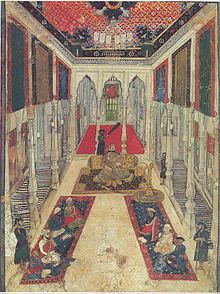
The following list includes a brief about the titles of nobility or orders of chivalry used by the Marathas of India and by the Marathis/Konkanis in general.

The following list includes a brief about the titles of nobility or orders of chivalry used by the Marathas of India and by the Marathis/Konkanis in general.
The titles used by royalty, aristocracy and nobility of the Maratha Empire
(Chitnis)
Desais were the rulers of Kudal (Sindhudurg) in Maharashtra. [22] [23] [24] Desai, or a loftier compound, was a rare title for rulers of a few princely states, notably - Raja Sar Desai in the Maratha Savantvadi State from 1627 until the adoption of "Raja Bahadur" in 1763.

Peshwa was second highest office in the Maratha Confederacy, next in rank and prestige only to that of the Chhatrapati. Initially serving as the appointed prime minister in the Maratha empire, the office became hereditary after the death of Shahu in 1749. During the reign of Shahu, the office of Peshwa grew in power and the Peshwas came to be the de facto rulers of the Maratha empire. However following the defeat of the Marathas in 1761, the office of the Peshwa became titular as well and from that point onwards served as the ceremonial head of the Confederacy underneath the Chhatrapati.

Balaji Baji Rao, often referred to as Nana Saheb I, was the 8th Peshwa of the Maratha Confederacy. He was appointed as Peshwa in 1740 upon the death of his father, the Peshwa Bajirao I.
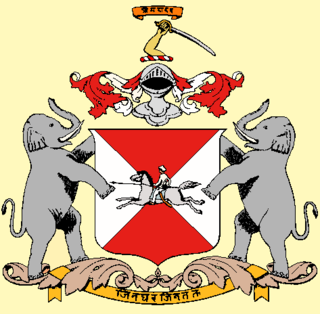
Gaekwads, a Hindu Maratha dynasty of the former Maratha Confederacy and its subsequent (erstwhile) princely state of Baroda in western India from the early 18th century until 1947. The ruling prince was known as the Maharaja Gaekwad of Baroda. With the city of Baroda (Vadodara) as its capital, during the British Raj its relations with the British were managed by the Baroda Residency. It was one of the largest and wealthiest princely states existing alongside British India, with wealth coming from the lucrative cotton business as well as rice, wheat and sugar production.
Dewan designated a powerful government official, minister, or ruler. A dewan was the head of a state institution of the same name. Diwans belonged to the elite families in the history of Mughal and post-Mughal India and held high posts within the government.

Maharaja Jivajirao Scindia KStJ was an Indian prince and government official.
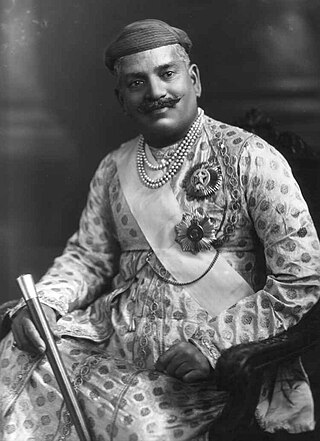
Sayajirao Gaekwad III was the Maharaja of Baroda State from 1875 to 1939, and is remembered for reforming much of his state during his rule. He belonged to the royal Gaekwad dynasty of the Marathas which ruled parts of present-day Gujarat.

Jayajirao Scindia GCB, GCSI, CIE of the Scindia dynasty of the Marathas was the ruling Maharaja of Gwalior under the British rule from 1843 to 1886.

Shrimant Daulat Rao Shinde was the Maharaja (ruler) of Gwalior state in central India from 1794 until his death in 1827. His reign coincided with struggles for supremacy within the Maratha Empire, and wars with the expanding East India Company. Daulatrao played a significant role in the Second and Third Anglo-Maratha wars.

The Daly College is a group of institutions consisting of a co-educational private boarding, day school, a private junior school, an undergraduate management school and a postgraduate business school, located in Indore, Madhya Pradesh, India. It was founded by Sir Henry Daly of the British Indian Army during India's colonial British Raj, following an English public school model. The school started in 1870 as the Residency School. It was then renamed as the East Rajkumar College in 1876, and in 1882, it came to be known as The Daly College. It was established by the Resident Governor of the erstwhile Presidency, to educate the children of the royalty, nobility and aristocracy of Central Indian Princely States of the 'Marathas', 'Rajputs', 'Mohameddans' and 'Bundelas'. It is one of the oldest co-educational boarding schools in the world.

Chakrāvarti Yashwant Rao Holkar (1776–1811) also known as Jaswantrao Holkar belonging to the Holkar dynasty of the Maratha Confederacy was the Maharaja of the Indore. He was a gifted military leader and educated in accountancy as well as literate in Persian and Marathi and Urdu.

Maharaja Sir Madho Rao Scindia of Gwalior, was the 5th Maharaja of Gwalior belonging to the Scindian dynasty of the Marathas.

Shrimant Maharaja Sir Pratap Singh Rao Gaekwad, who belonged to the Gaekwad dynasty of the Marathas, was the ruling Maharaja of Baroda. He succeeded to the throne upon the death of his grandfather Sayajirao Gaekwad III in 1939. In 1947, British India was partitioned into two independent dominions, and Pratap Singh acceded his state to the Dominion of India. By 1949, Baroda had been merged into India.

Maharajadhiraj Raj Rajeshwar Sawai Shri Sir Tukoji Rao II Holkar XI Bahadur was the Maharaja of Indore and a member of the Maratha Holkar dynasty. His birth name was Shrimant Yukaji Jaswant Holkar. He was the son of Raja Shrimant Santoji Rao Holkar, from the collateral branch of the Holkar dynasty.

Kolhapur State or Kolhapur Kingdom (1710–1949) was a Maratha princely State of India, under the Deccan Division of the Bombay Presidency, and later the Deccan States Agency. It was considered the most important of the Maratha principalities with the others being Baroda State, Gwalior State and Indore State. Its rulers, of the Bhonsle dynasty, were entitled to a 19-gun salute – thus Kolhapur was also known as a 19-gun state. The state flag was a swallow-tailed saffron pennant.

Baroda State was a princely state in present-day Gujarat, ruled by the Gaekwad dynasty of the Maratha Confederacy from its formation in 1721 until its accession to the newly formed Dominion of India in 1949. With the city of Baroda (Vadodara) as its capital, during the British Raj its relations with the British were managed by the Baroda Residency. The revenue of the state in 1901 was Rs. 13,661,000. Baroda formally acceded to the Dominion of India, on 1 May 1949, before which an interim government was formed in the state.

Jath State, was one of the non-salute Maratha princely states of Deccan States Agency, one of the former Southern Maratha Jagirs. Jath State and Daphlapur State were the only two states belonging to the Bijapur Agency under the Bombay Presidency, which later became part of the Deccan States Agency.
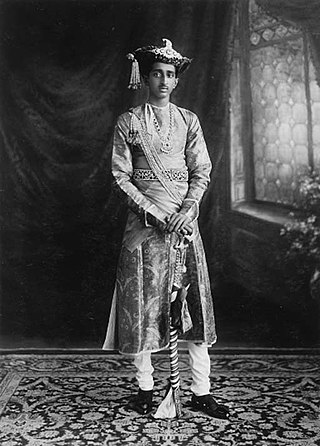
Maharajadhiraj Raj Rajeshwar Sawai Shri Sir Yeshwant Rao II Holkar XIV Bahadur was the Maharaja of Indore belonging to the Holkar dynasty of the Marathas. With his first wife, he became known for a life of elegance and extravagance in the 1920s and 30s.
Maharajadhiraj Raj Rajeshwar Shrimant Malhar Rao III Holkar VII Subadar Bahadur, belonging to the Holkar dynasty of the Marathas was the Maharaja of. He was born at Bhanpura in 1806 and was the only son of Yashwant Rao Holkar, Subadar of the Holkar Domains, and his wife Krishna Bai Holkar Mahasahiba.
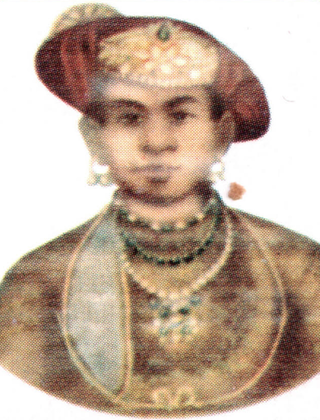
Maharajadhiraj Raja Rajeshwar Sawai Shri Marthand Rao Holkar VIII Bahadur or Marthand Rao Holkar (1830–1849) belonging to the Holkar dynasty of the Marathas was briefly the Maharaja of Indore (1833–1834).
Hereditary rights of Karhades were those of Desai, district officer, or Deshmukh, and Sardesai, senior district officer.